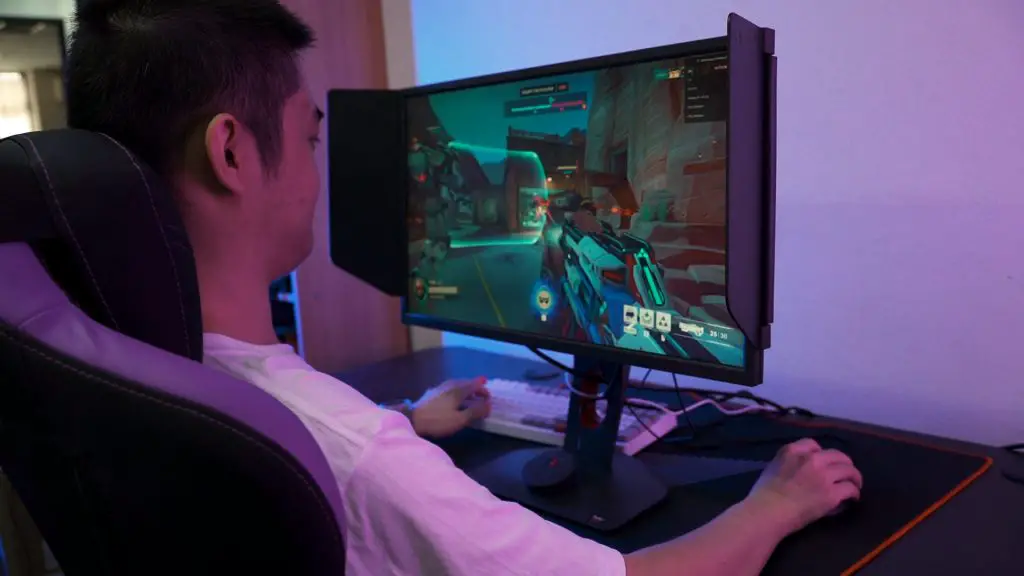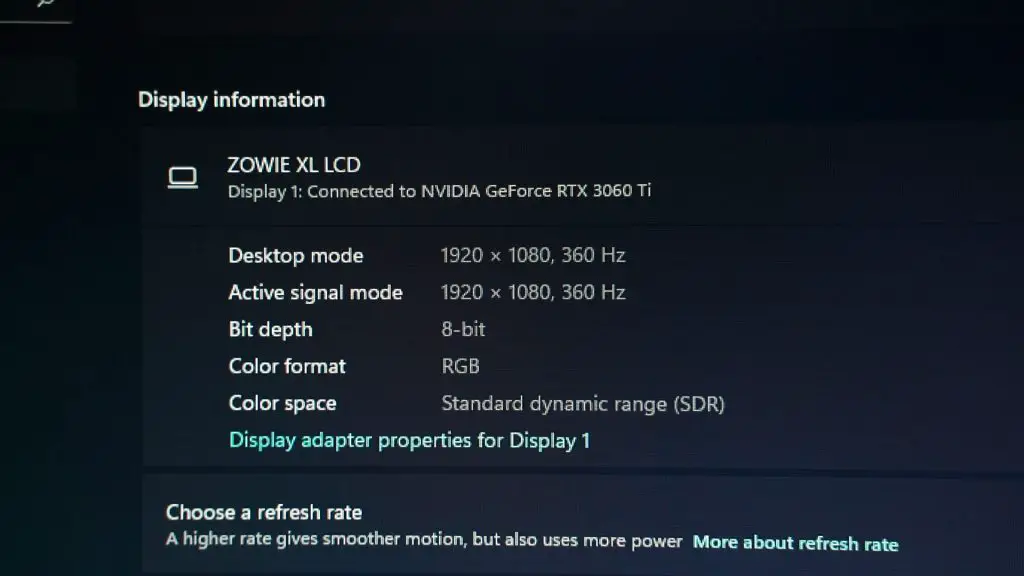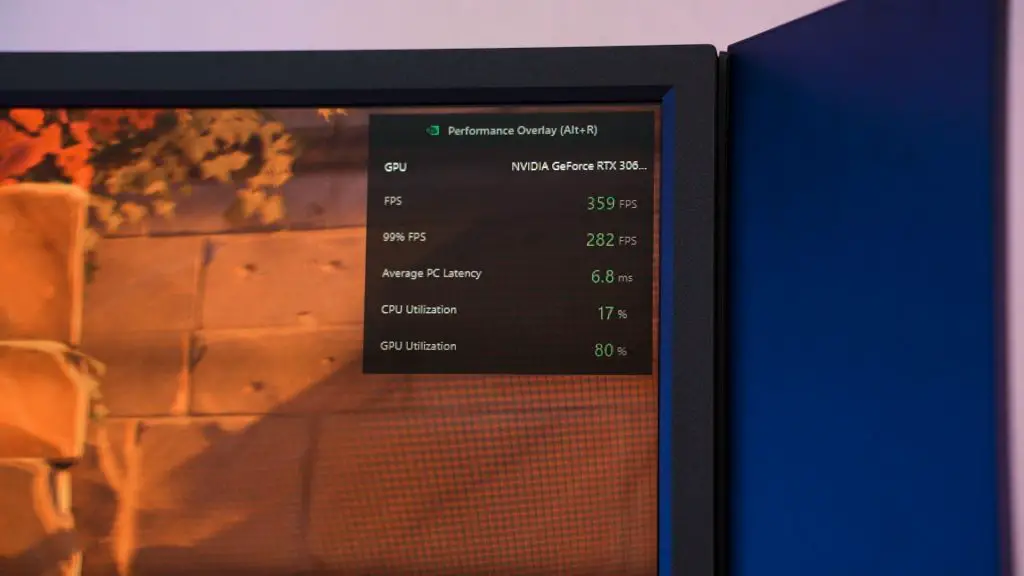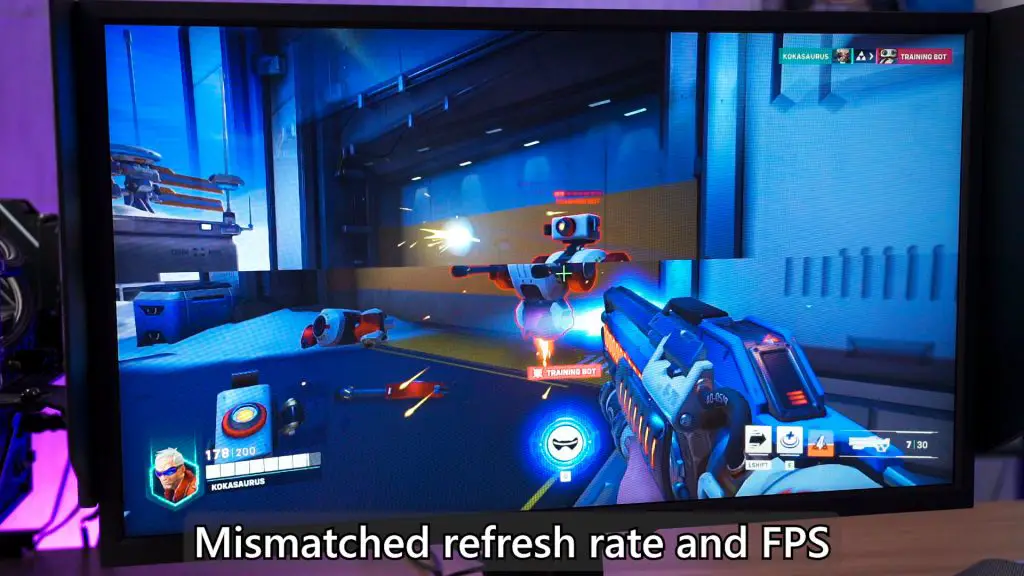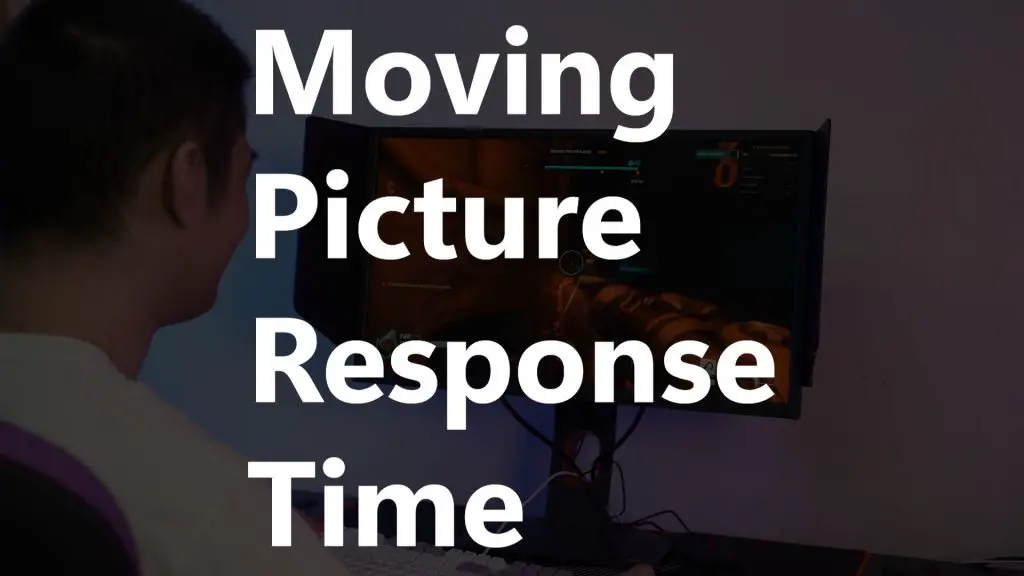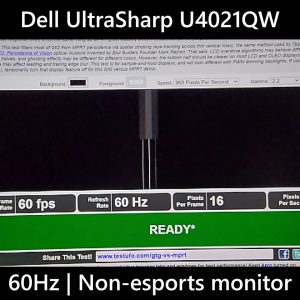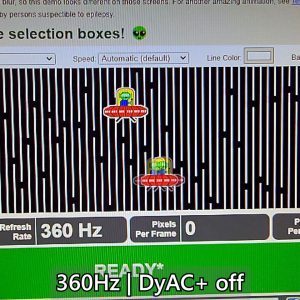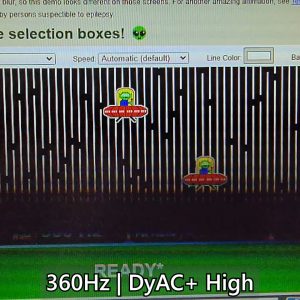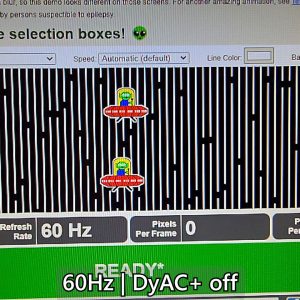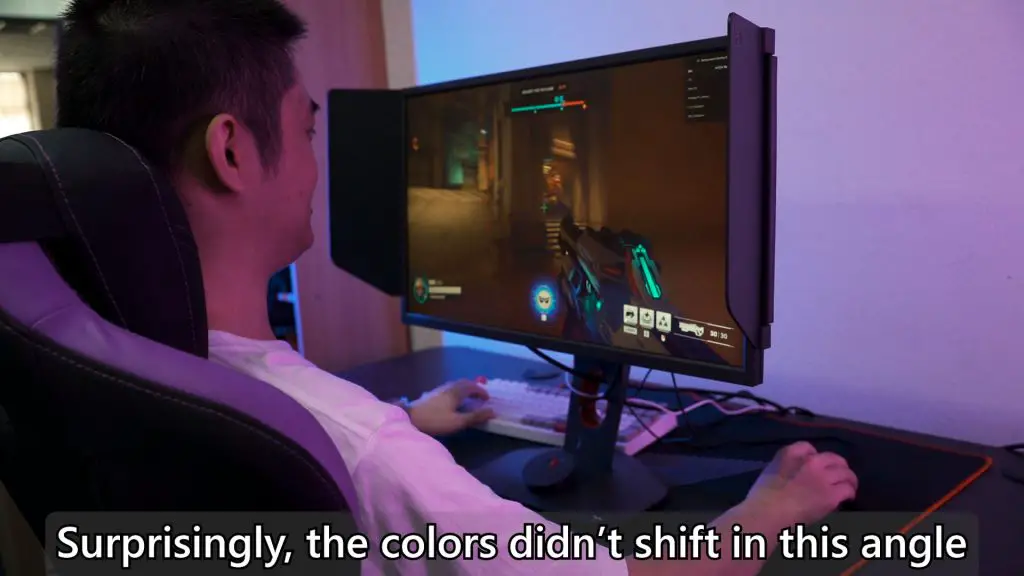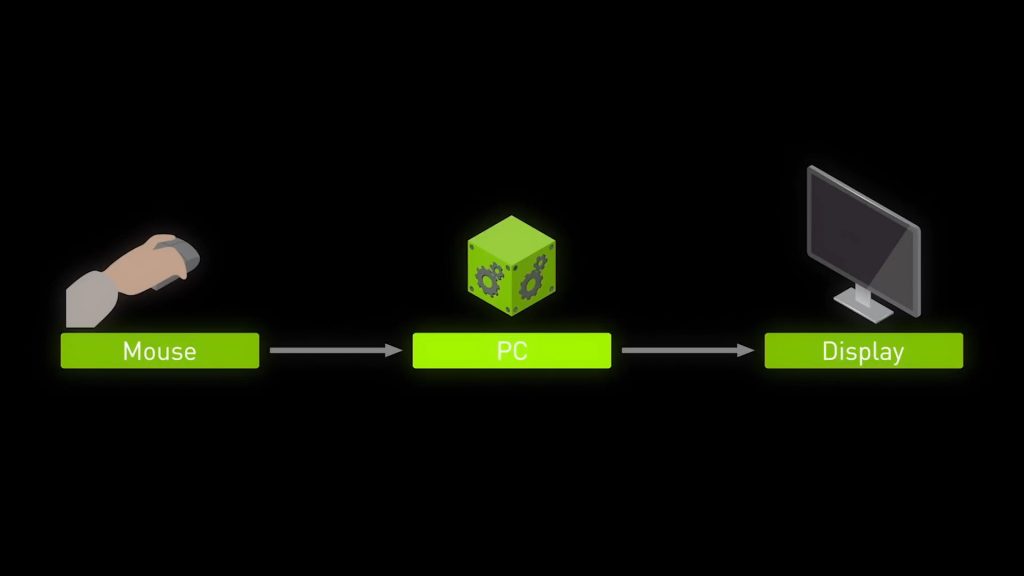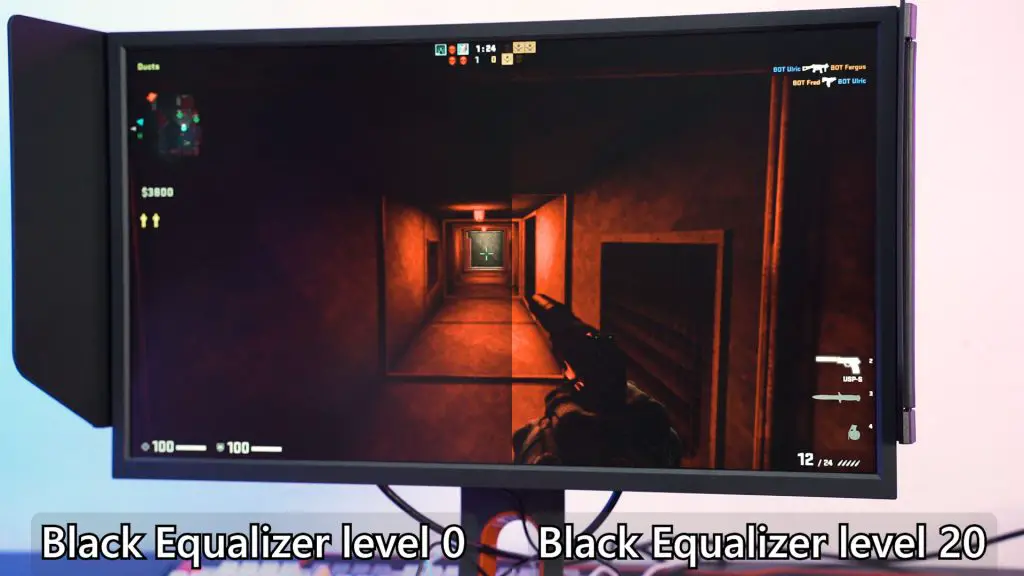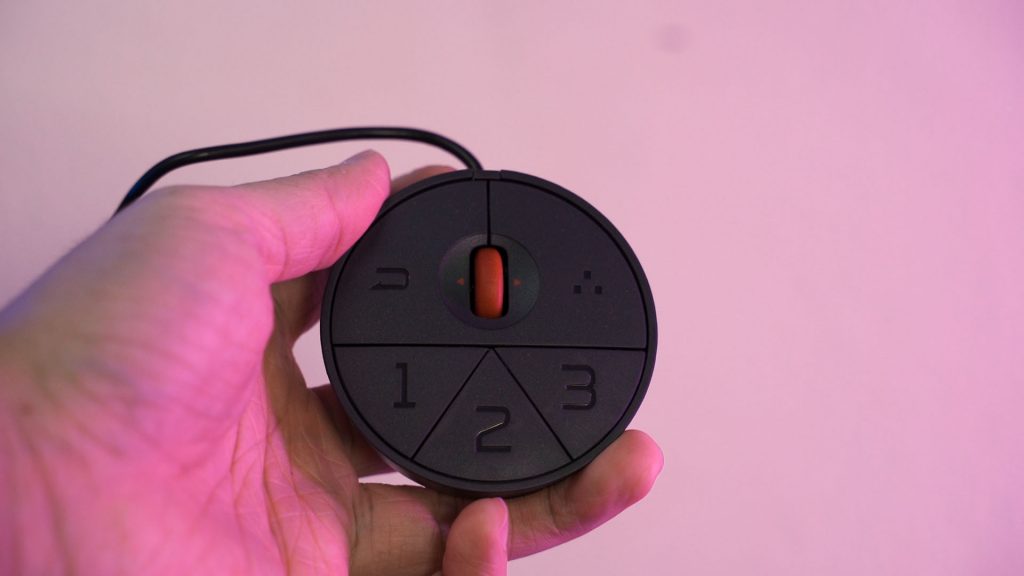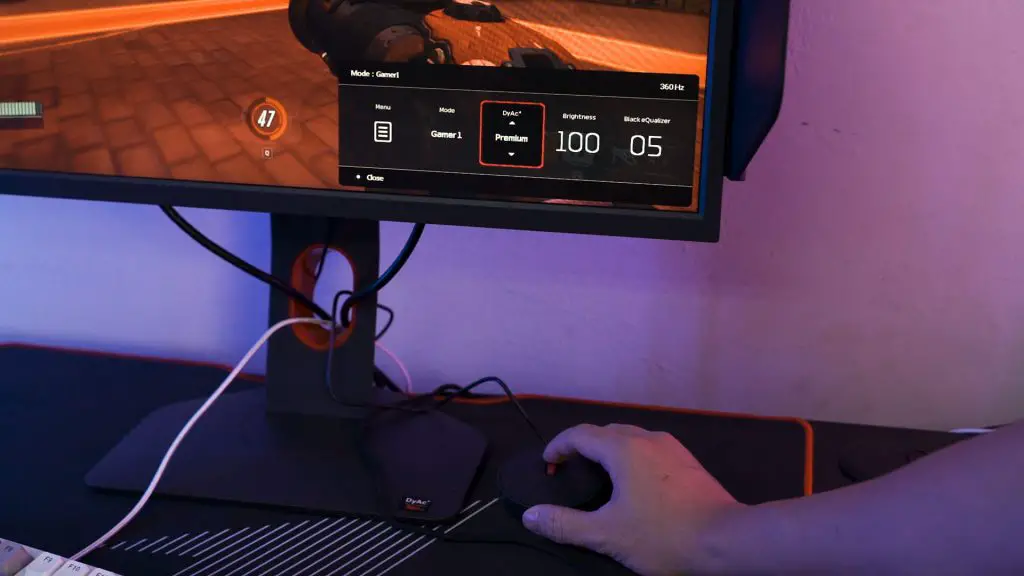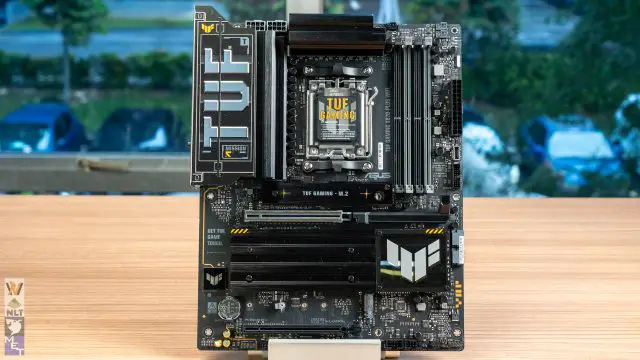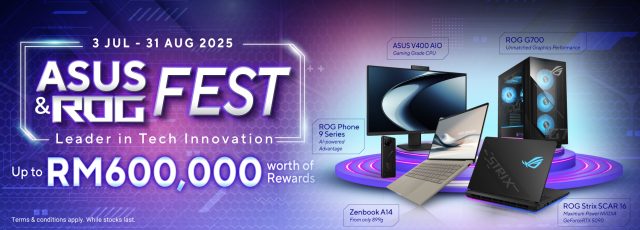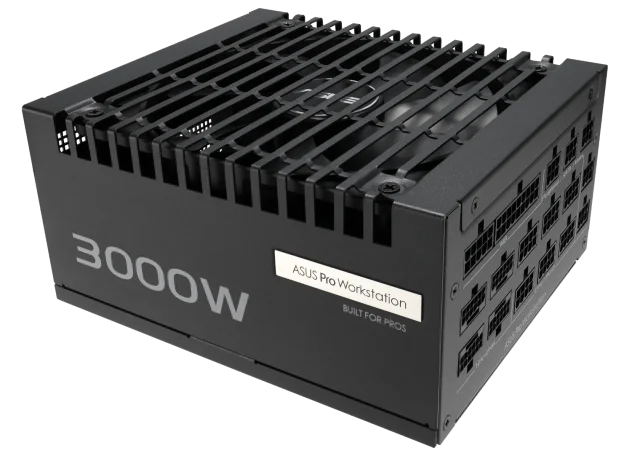Introducing, the BenQ ZOWIE XL2566K monitor. We bring this up because when it comes to PC gaming, everyone says that “if you want to have the best gaming experience, you’re going to need a high refresh rate monitor”, right? That’s what the marketing says and that’s what NVIDIA says too – frames win games. In terms of motion smoothness, yes. But, what if I tell you that there are more things that you need to pay attention to – like pixel response time and motion blur? Let’s talk about it.
For today’s topic, I’ll use the BenQ ZOWIE XL2566K as our example. This is a 24.5-inch monitor with a standard 16:9 aspect ratio with 1920×1080 pixels in resolution and goes up to 360Hz refresh rate. This is also a TN panel – and before you head into the comments and complain about how bad TN panels are, just calm down. TN panels have improved a lot over the years and high-grade TN panels will not shift in terms of their colors that easily.
To know why frames don’t necessarily mean winning in games, we need to talk about the basics and what you need to know.
Refresh rate
First, refresh rate. This is the number of times your monitor is going to refresh or redraw the entire image shown on the screen in one second. This is the number of Hertz that we always see on the monitor’s marketing, like 144Hz, 165Hz, 240Hz, and 360Hz. I need to emphasize that the refresh rate of your monitor is totally independent of the FPS, or refresh rate.
FPS
And now, we’ll talk about the frames per second – always referred to as FPS. Higher FPS is always more fluid in terms of animations and movement in games. However, since the refresh rate and FPS are independent of each other, if you have too high of an FPS or the frames are rendered out of sync in terms of time with the refresh rate, then you’ll get screen tearing. Both NVIDIA G-Sync and AMD FreeSync were invented to solve this issue.
Just to show you what we mean by screen tearing, here’s an example.
Grey-to-grey (GtG) response time
Then, the third aspect is the GtG response time – also known as the grey-to-grey response time. However, this number isn’t exactly the most reliable. Let’s use the usual 8-bit color and make it monochromatic. 8-bit color means there are 256 shades of grey, but the monitor manufacturers never tell us which grey to which grey they are using.
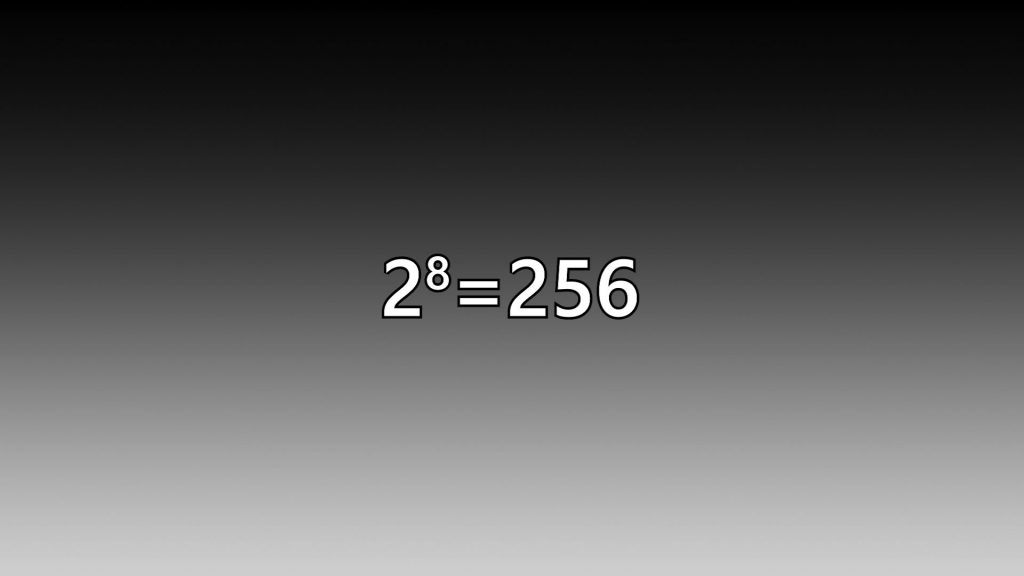
The standard practice is using the VESA method that measures from 10% to 90% brightness – because the grey that we perceive is technically just how much light the backlight is producing.
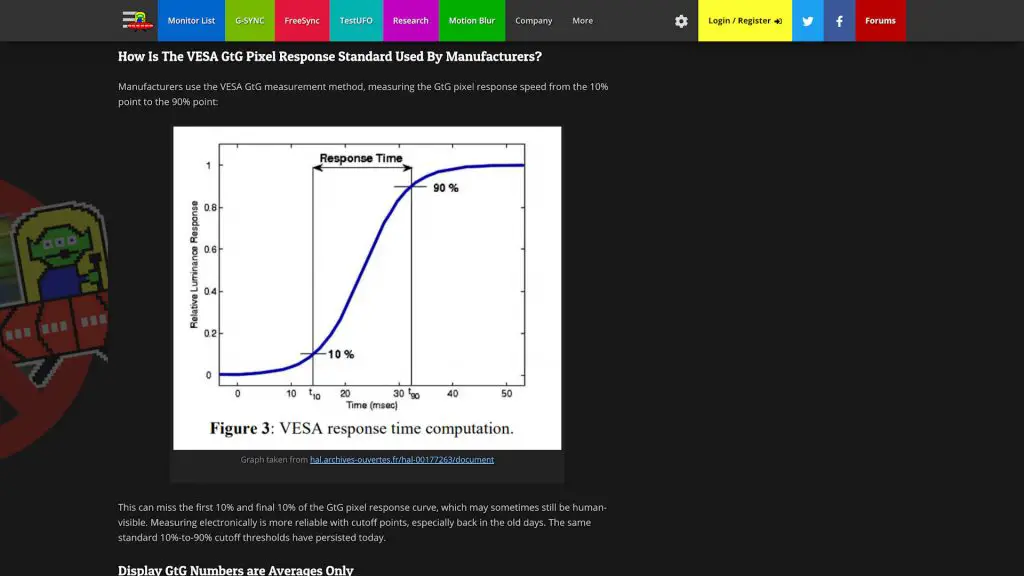
Generally, a high refresh rate monitor like 144Hz does have a lower GtG and quicker pixel response time compared to a 60Hz because everything eventually needs to be up to a certain standard to be considered “acceptable” for that range of refresh rate monitors.
MPRT
There is another marketing term used, and it’s called MPRT. It stands for “moving picture response time” and this is what results in motion blur in LCD monitors that we see while playing fast-paced games. Not to be confused with GtG response time because they are two different things.
MPRT might be a bit difficult to explain. Let’s take a fast-paced FPS game like Overwatch for example. MPRT matters a lot when it comes to me tracking the target with my mouse cursor while the enemy is moving. For monitors with low MPRT like the BenQ ZOWIE XL2566K, the image of the enemy stays clear and sharp on the screen. However, on another monitor that we have, the image is smeared.
For LCD screens, the image is conventionally shown using a technique called sample-and-hold. Essentially, for a 60Hz monitor needs to hold the image for at least 1/60 of a second – that means 16.7ms, a 144Hz monitor will need to hold for 6.9ms, so on and so forth. However, there will be some residual image when it is time to change the frame – hence if a fast-moving object on not-so-fast LCD screens will become smeared. This is also called ghosting by some people.
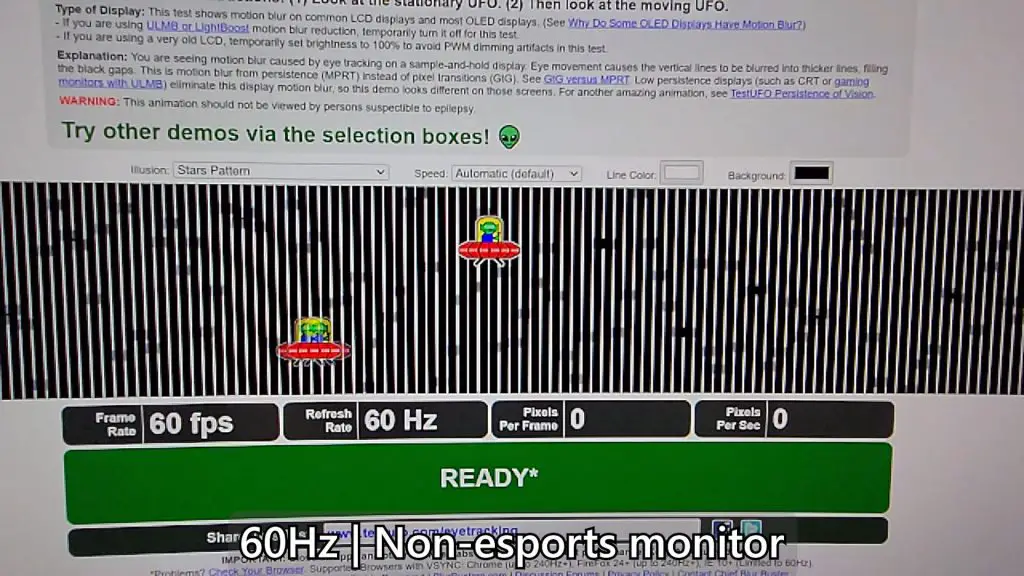
But instead of using the sample-and-hold technique, we can also use strobing or black frame insertion. This also simulates how a CRT monitor will work because there is technically a screen of black when the cathode ray goes from the last pixel back to the first pixel. Surprisingly, strobing is rather effective in eliminating image smearing.
This ZOWIE monitor has something called DyAC+ and it works supremely well and I had such a good time playing Overwatch. I literally played better because I can see better. Less image smearing means I can see the enemies clearer, and surprisingly, less distracting too.
DyAC+
The folks at Blur Busters, the creator of the famous UFO test, also made a lot of other tests too. The one that I want to highlight is this eye-tracking one. There are two ways to use this test – first one is to look at the stationary UFO and see how much the background smears. This is to see the number of distractions going on around the subject.
Then, the second test is to move your eyes and follow the movement of the second UFO. This test is the ultimate pixel response time test. Great gaming monitors like the BenQ ZOWIE XL2655K will look sharp. In comparison, a non-gaming monitor like my Dell UltraSharp U4021QW, is definitely very slow in terms of response time. That’s why the motion blur is so obvious – especially in scenes like this.
And that sets the difference between fantastic esports monitors and the others.
I have to clarify that we are not esports gamers. We aren’t even competitive gamers here – but I can definitely realize the difference in terms of clarity of fast-moving objects when using the BenQ ZOWIE XL2566K. Optimum Tech, who is really good at FPS games, said that the DyAC+ technology is really good.
Most of the time, the strobing effect is not even noticeable to us – so why isn’t this technology on all monitors? Well, that is because not everyone is the same. The strobing effect in itself is the main problem for many people.
Essentially, strobing is very much like PWM brightness adjustment. The display flickers – and many people with sensitive eyes will feel eye fatigue and even get a headache.
“TN Panel though”
Okay, we also need to talk about the TN panel yet again. They have improved a lot over the years. If you want a monitor with a fast response time then it’ll most probably be a TN panel. It is just inherently much faster than an IPS screen. But yes, they still suffer from the narrow viewing angle as the color shifts when you look at the screen from an angle. The colors – while they look a bit flatter than their IPS panels – still look okay, but that depends on your personal preference and if you’re okay with the sacrifices.
All of the things that we talked about today, however, aren’t always displayed by the monitor manufacturer. BenQ ZOWIE is a brand that is focused on esports players – and that is why they emphasize these features to reduce motion blur with a high refresh rate and low pixel response time.
While all these numbers may sound like they’re just a tiny fraction of a second, it matters a lot. When you’re competing for let’s say a million dollars in an esports tournament, your adrenaline kicks in and time dilation happens. Those few milliseconds suddenly become a deciding factor in winning or losing.
Input lag?
There is one more metric that we need to talk about – and that is the input lag. This metric is up in the air as it is the measurement of the time taken from the moment we click our mouse and the moment it appears on the screen.
Because everyone has different hardware on their PC, my input lag is definitely not equal to your input lag. However, there are some monitors with the new NVIDIA Reflex – and we’ve already talked about it in our previous video – so watch it here.
Black eQualizer
Have you ever played a game whereby the enemy is right in front of you, but it’s too dark and you can’t see the enemy and got a cheap shot to the head and died? Yeah, I hate that feeling too – and BenQ ZOWIE has a feature called Black eQualizer to “boost” the brightness of the dark areas without affecting the overall image so we can avoid getting cheap shots.
Level 0 is the minimum whereby level 20 is the maximum – and here, we can see the difference it makes. Seriously, this feature helps a lot.
S-Switch
Now, the BenQ ZOWIE XL2566K has a lot of presets within the OSD menu that we can fine-tune, and depending on what games we’re playing, we may want to change the settings. That is why BenQ ZOWIE has an exclusive feature called the S-Switch which essentially acts as a remote control for the OSD menu.
It can also save up to 3 different profiles that can be switched between one another with just a press of any of the number button.
XL Settings to Share
If you just want to learn from the pros and use their settings in your own training sessions, then use the XL Setting to Share feature. Users can upload their own settings to the internet and you can upload it to your own BenQ ZOWIE monitor.
Color Vibrance
It is technically doing what the name suggests. It boosts the color vibrancy of the screen, making everything “more alive” and less dull. The reason why you would do that is to make enemies look distinctive when compared to the background.
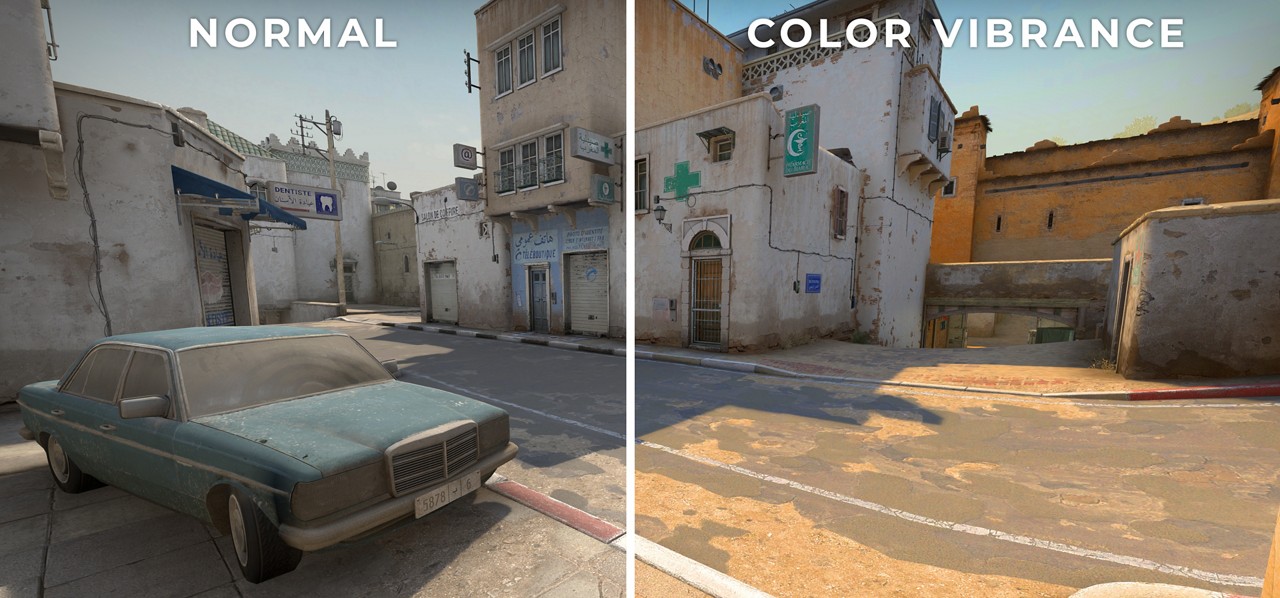
You could just adjust the color vibrancy on the monitor using the S-Switch directly, or use the aforementioned XL Setting to Share feature to download the color modes that pros use, or get it directly from BenQ ZOWIE.
Where to buy the BenQ ZOWIE XL2566K?
To learn more about the BenQ ZOWIE XL2566K, click here.


